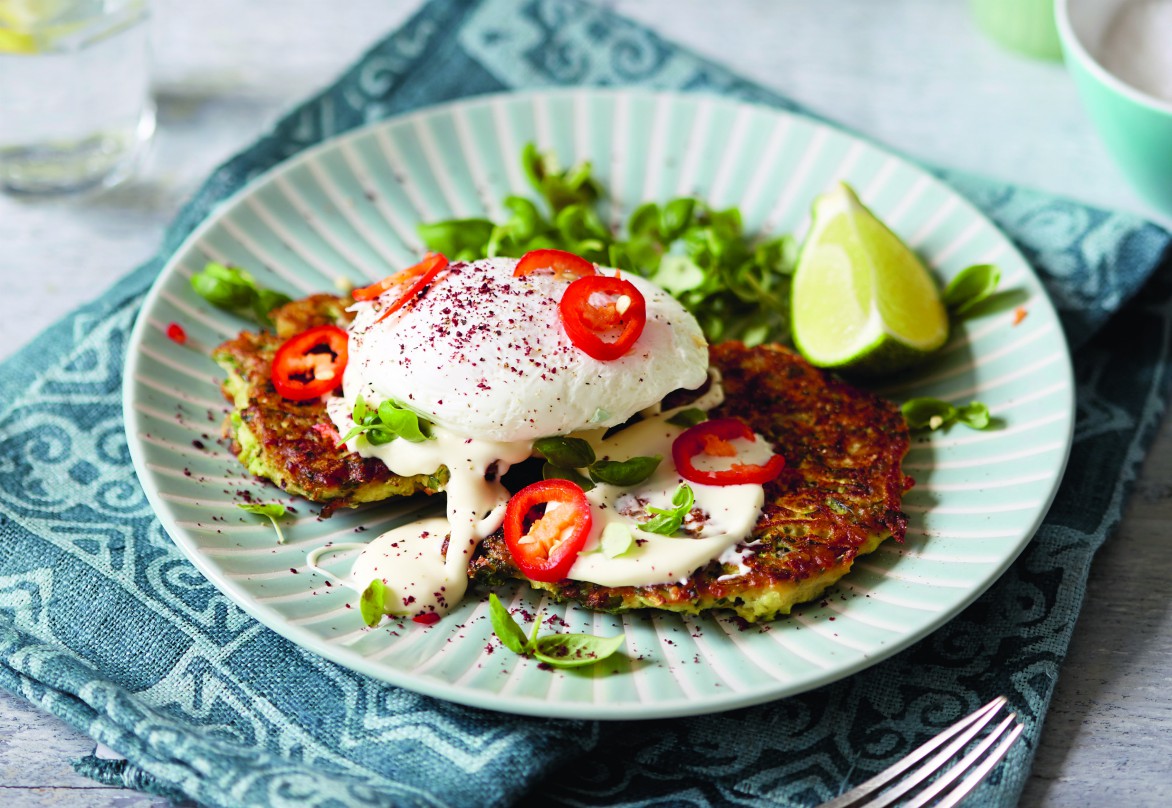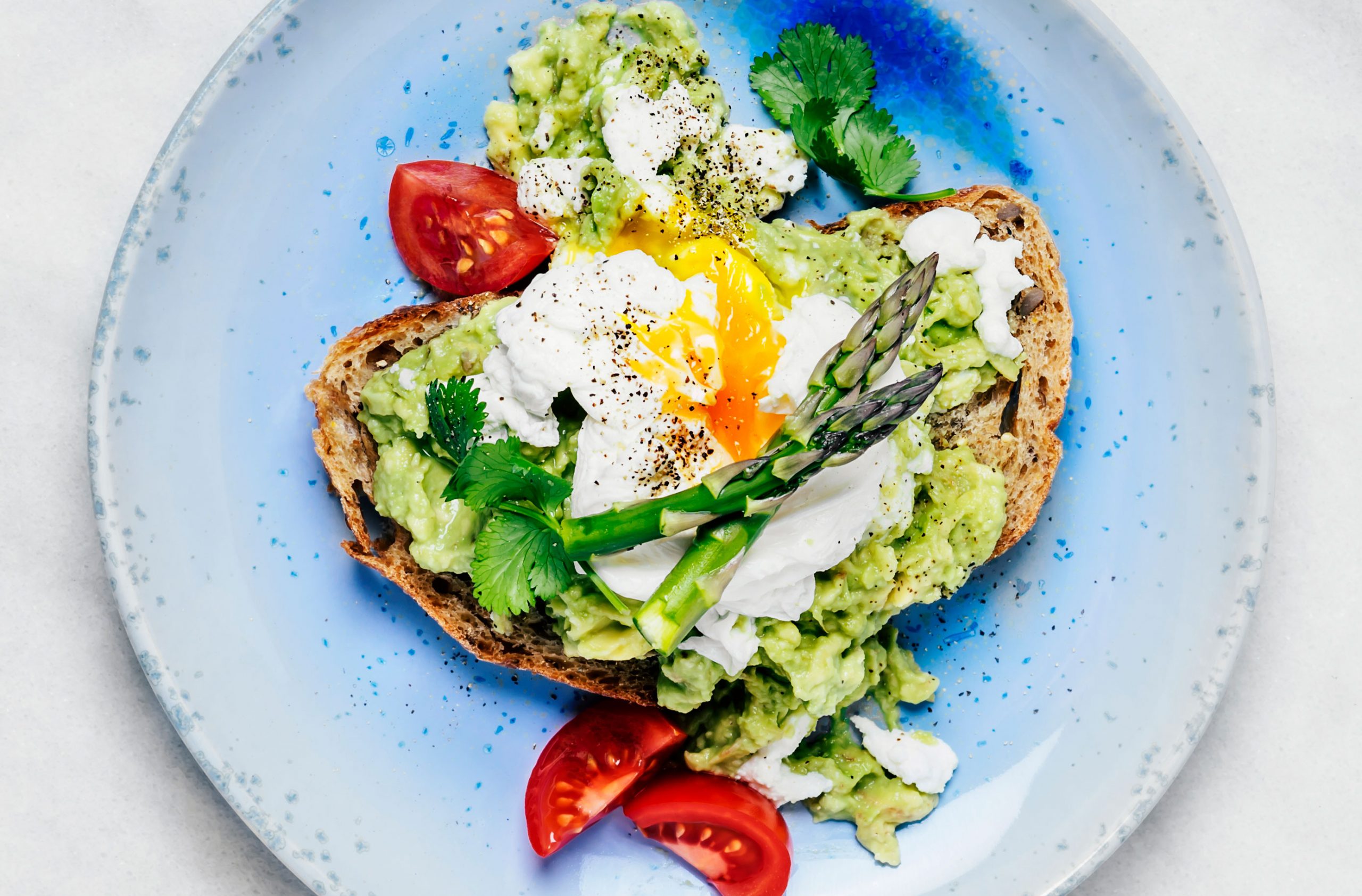
Learn how to poach an egg in four simple steps! These perfect poached eggs are great served on a hot, buttered crumpet for breakfast or in a tasty Eggs Benedict.
Not everyone knows how to poach an egg and even those that do struggle sometimes. But follow our instructions and you'll nail it every time. You just need to add a drop of vinegar to the water to help keep the egg together.
This easy video recipe will show you how to poach the perfect egg every time. Once you've mastered this technique you'll be able to show off your skills to friends and family. Why not serve poached eggs on toast with smashed avocado and cracked black pepper for the ultimate on-trend breakfast or brunch?
A breakfast and brunch staple, this is a key cooking technique which is worth practising. It's difficult to get right first time but so easy once you've mastered it.
Once you've poached the egg its best to serve and eat straight away as the fresher the egg, the better. We'd also recommend using a slotted spoon to scoop the cooked egg out of the water as it will help any excess water to drain off of the egg before serving.
How to poach an egg in water?
Poaching an egg in water is really easy. It’s best done in a frying pan so that you can easily get the egg in and out without breaking it.
We have an easy fool-proof recipe and video below. Our Test Kitchen also have some handy tips to spruce your eggs up:
Parenting advice, hot topics, best buys and family finance tips delivered straight to your inbox.
Food Director, Elisa, likes to crack her egg in to a small cup or little bowl first to make it easier and check the yolk isn’t broken. Elisa also says “If I’m being fancy, I might snip off any ratty tail bits with scissors before serving”
Senior Food Writer, Jessica, says “I use a small bowl, line with a square of cling film, rub it with oil then crack the egg in and season. Then I join all four corners ensuring no air and twist or tie. I pop in boiling water for around 4mins. It’s important that it's cling and not food wrap as the latter with melt.” Jessica likes to use this method as it’s also possible to put flavourings in such as chilli flakes.
Our Food Writer, Keiron, follows Nigella Lawson’s advice “Like Nigella, I crack my fresh egg into a tea strainer or small fine mesh sieve to eliminate that stringy swirl. Splash the egg with a little white wine vinegar and add to a pan of just boiling water.”

How to poach an egg in a microwave?
Not everyone likes to use a microwave but it is actually a great way to poach an egg. It is particularly useful for students or for those with a small kitchen.
You do not need much equipment, just a microwaveable bowl or mug and a small plate. Then you just need your egg and some white wine vinegar (optional). You can serve your poached egg however you like but we like it as part of an eggs benedict with wilted spinach.
Pour ½ cup of water in to the microwaveable bowl or mug and crack in your egg. Add a splash of white wine vinegar if you have it. Cover with a microwaveable plate, turn the power on to high and cook for 1 min. Check the egg and, if it is not cooked, continue to cook in 10 sec blasts until it is cooked to how you like it.
How to tell if your eggs are fresh?
Unless you saw the chicken lay the egg it is difficult to know exactly how fresh it is. If you purchase your eggs from the supermarket they will come with a best before date. The closer it gets to the egg the less fresh it is.
Once you have cracked open the egg you can tell if it is off as it will have an obvious bad smell. Throw it away immediately if this is the case.
Delia Smith suggests trying the float test. Place your egg in a glass of water, if it sinks straight to the bottom and sits horizontally it’s very fresh. If the egg tilts up a little then it is less fresh. Finally, if it stands up vertically and floats then it is very stale.
Stale eggs will not work well for a poached egg but, as long as they are not off, you can use them for scrambled eggs or an omelette.

Ingredients
- 1 egg, as fresh as possible
- Slotted spoon
- Large frying pan
- Drop of cider vinegar
- Freshly boiled water in a kettle
WEIGHT CONVERTER
Method
- Crack an egg into a small ramekin and set aside.
- Half-fill a large frying pan with freshly boiled water from the kettle, add in a small drop of cider vinegar and heat over a medium flame. Watch for small bubbles to appear round the edge. Don't boil the water.
- Carefully drop in your egg, keep it on a low heat and time for 3-5 mins. The egg will start to rise to the top of the pan once it's cooked.
- After the 3-5 mins, carefully take the egg out of the frying pan with a slotted spoon and put it on some kitchen paper to drain and it's ready to eat! Serve on top of a hot, buttered crumpet or toast. The amount of time it takes to cook depends on how firm you want your yolk - 3 mins should be enough for a runny yolk.
'The eggs need to be as fresh as possible, otherwise the egg whites tend to spread on contact with the water. If you don't think your eggs are really fresh, add a drop of vinegar to the water to help set the whites.'

Former Assistant Headteacher, Samuel has a BSc in Food from the University of Birmingham and is also Co-Vice Chair of the Guild of Food Writers and a Trustee of 91 Ways CIC. His work has featured in national and international publications including Waitrose Food, Australian Delicious, and the LAD Bible Group. Samuel has also consulted on a number of best-selling food and drink books, and was a nutritional consultant for BBC’s Eat Well for Less.
